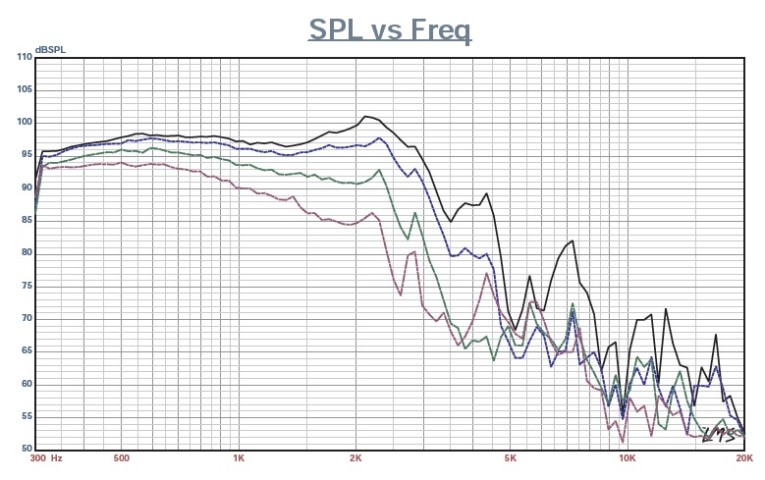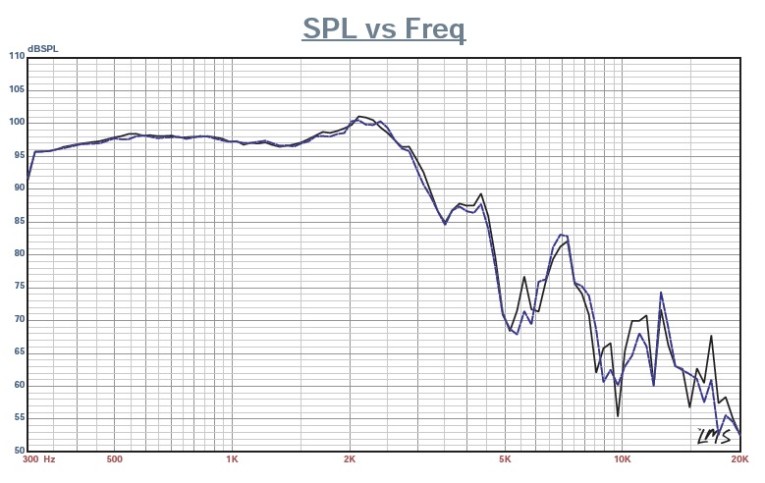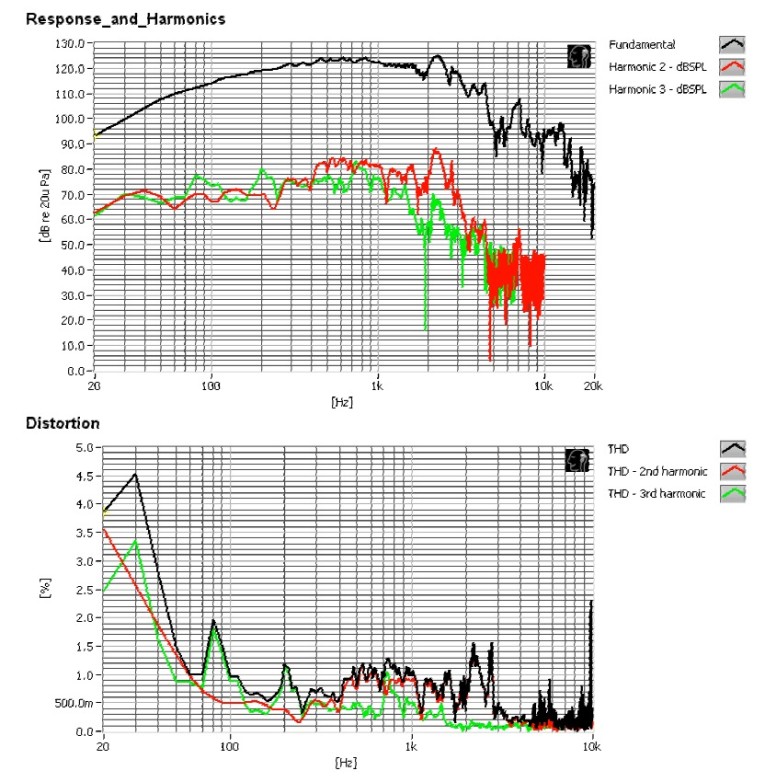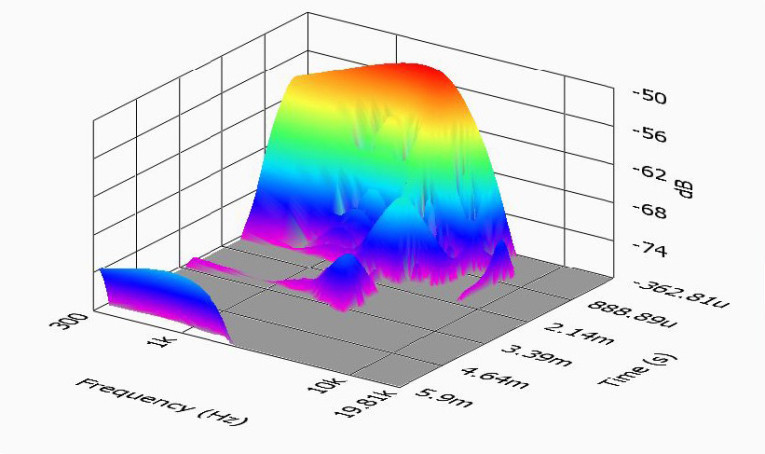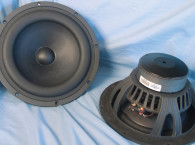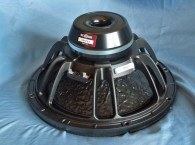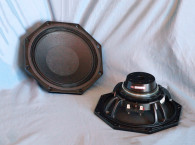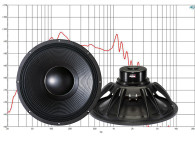This Test Bench is about the 12NDL88 from Italian pro sound OEM, B&C Speakers. The 12NDL88 is a new 12” high sound pressure level (SPL) woofer with a neodymium motor. B&C Speakers adds this 12” driver to an already extensive line up of 12” pro sound woofers—18 total, which include eight neodymium motor 12” and 10 ferrite motor 12”. This sample submission is in the upper range of power handling in this extensive group with a continuous power handling rating of 1,400 W (700 W RMS). Applications range from two and three-way PA speakers and compact two-way designs for high SPL in limited spaces.

Features for the B&C Speakers 12NDL88 are impressive. Starting with the frame, B&C Speakers has come up with a proprietary six twin-spoke cast aluminum frame incorporating six 40 mm × 3 mm rectangular vent holes in the area below the spider mounting shelf for enhanced voice coil cooling. This series of cooling vents moves air past the voice coil and across the front side of the neodymium motor assembly.
The cone assembly consists of a curvilinear paper cone with a front side waterproof coating and a 4.5” diameter paper dust cap, likewise with a waterproof coating. Compliance is provided by a three roll “M”-shaped pleated coated cloth surround, and the remaining compliance comes from a 6” diameter flat cloth spider.
The motor design on the B&C Speakers 12NDL88 utilizes an inside neodymium slug along with a T-shaped pole piece. The neodymium magnet motor was finite element analysis (FEA) designed using an 88 mm (3.5”) diameter voice coil wound with round aluminum wire on a non-conducting glass fiber former. Motor parts, the return cup, and front plate are coated with a black heat emissive coating for improved cooling. The cooling is additionally enhanced by eight 7-mm diameter peripheral vents on the back side of the return cup. Last, the voice coil is terminated to injection-molded terminal block with color coded push terminals. Overall, it is an appropriate feature set that looks great.
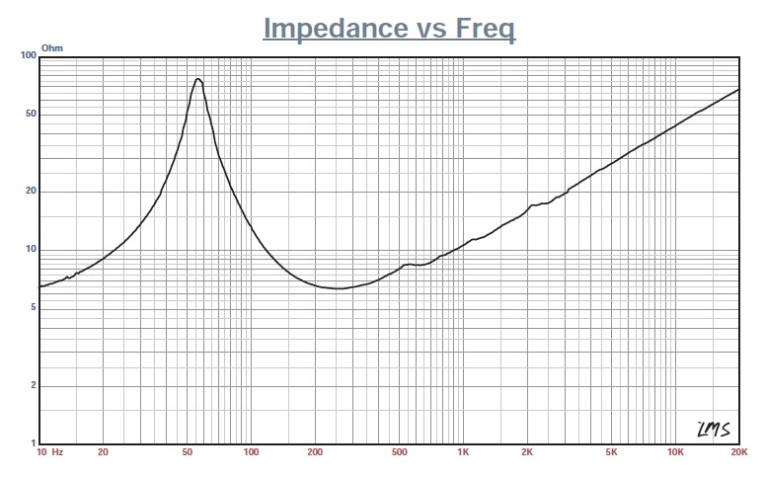



I began analysis of the 12NDL88 using the LinearX LMS analyzer and VIBox to create both voltage and admittance (current) curves. I clamped the driver to a rigid test fixture in free-air at 1, 3, 6, 10, 15, 20, and 30 V. The driver remained acceptably linear enough for LEAP 5 to curve fit at 30 V, so all the data was utilized.
Following my established Test Bench protocol, I no longer use a single added mass measurement. Instead, I use the physically measured Mmd data (64.1 grams for the 12NDL88). I post-processed the 16 550-point stepped sine wave sweeps for each 12NDL88 sample and divided the voltage curves by the current curves to generate impedance curves. I used the LMS calculation method to derive the phase and imported them, along with the accompanying voltage curves, to the LEAP 5 Enclosure Shop software.
Because the Thiele-Small (T-S) parameters provided by the majority of OEM manufacturers is generated using either the standard model or the LEAP 4 TSL model, I also used the 1 V free-air curves to create a LEAP 4 TSL parameter set. I selected the complete data set, the LTD model’s multiple voltage impedance curves, and the TSL model’s 1 V impedance curve in LEAP 5’s Transducer Model Derivation menu and created the parameters for the computer box simulations. Figure 1 shows the 1 V free-air impedance curve. Table 1 compares the LEAP 5 LTD and TSL data and factory parameters.
The 12NDL88 LEAP parameter calculation results closely agreed with the published factory data. Following my established measurement protocol, I used the LEAP LTD parameters for Sample 1 to configure computer enclosure simulations. I programmed two computer box simulations into LEAP 5—one the factory recommended vented box with a 1.4-ft3 volume (15% fill material) tuned to 65 Hz and an Extended Bass Shelf (EBS) vented alignment with the same 1.4-ft3 volume but tuned lower to 55 Hz, also simulated with 15% fiberglass damping material.
Figure 2 displays the results in the two vented enclosures at 2.83 V and at a voltage level high enough to increase cone excursion to 6.3 mm (XMAX + 15%). This produced a F3 frequency of 60 Hz (F6 = 65 Hz) for the factory-recommended enclosure and –3 dB = 57 Hz (F6 = 48 Hz) for the EBS-vented simulation. Increasing the voltage input to the simulations until the maximum linear cone excursion was reached resulted in 119 dB at 40 V for the factory recommended box and 117 dB for a 36 V input level for the lower tuning vented box. Figure 3 shows the 2.83 V group delay curves. Figure 4 shows the 40 V/36 V excursion curves. Please note that the drivers start over excursing below 50 Hz, so an appropriate high-pass filter will considerably increase the undistorted output.


Klippel analysis for the 12NDL88 produced the Bl(X), KMS(X), and Bl and KMS symmetry range plots shown in Figures 5–8. (Our analyzer is provided courtesy of Klippel GmbH), and Patrick Turnmire of Redrock Acoustics performs the analysis). The 12NDL88’s Bl(X) curve (see Figure 5) is fairly broad and mostly symmetrical. Looking at the Bl symmetry plot (see Figure 6), this curve shows virtually no offset at the rest position and throughout the driver’s operating range, which is quite good performance.
Figure 7 shows the KMS(X) curve, which is also rather symmetrical in both directions. Figure 8 shows the KMS symmetry range plot with the curve resolving to only a 0.4 mm coil-in offset at the driver’s 8-mm physical XMAX. Displacement limiting numbers calculated by the Klippel analyzer were XBl at 82% Bl = 6.4 mm and for the crossover at 75%, CMS minimum was 6.2 mm, so compliance is the most limiting factor for prescribed distortion level of 10%. However, if we use the more liberal 20% distortion criteria, XBL at 70% Bl = 8.3 mm and crossover = 10.5. Figure 9 shows the 12NDL88’s inductance curves Le(X).
Inductance will typically increase in the rear direction from the zero rest position as the voice coil covers more pole area. This does not happen here, but it is typical of this neodymium motor type. The 12NDL88’s inductance swing is a really low 0.25 mH rest to coil-out XMAX, and 0.08 mH rest to coil in XMAX, which is excellent performance.
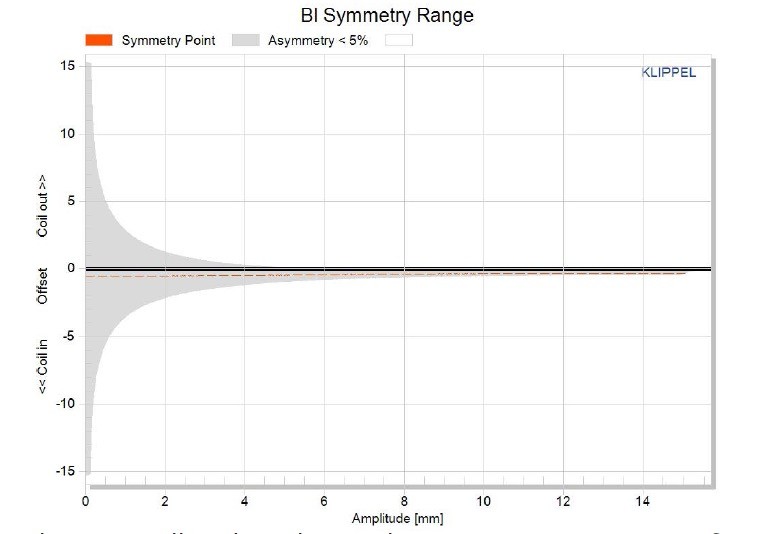
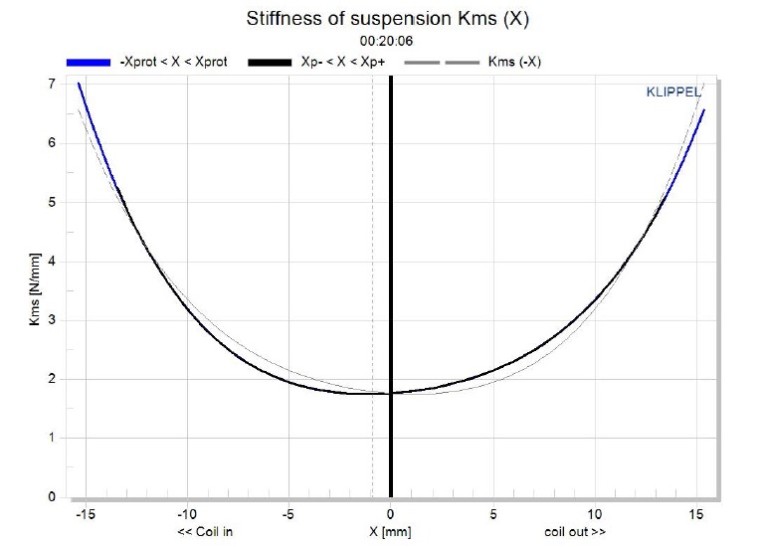

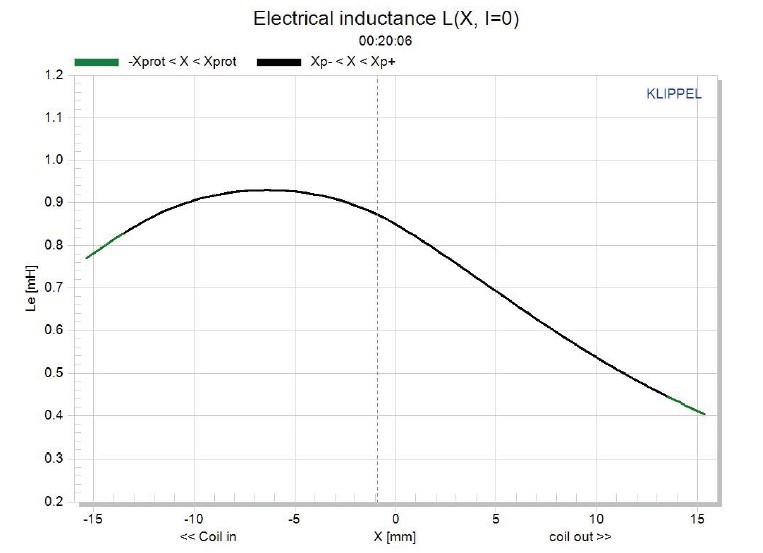
Next, I mounted the 12NDL88 in a foam-filled enclosure with a 15” × 14” baffle and measured the Device Under Test (DUT) from 300 Hz to 40 kHz at 2.83 V/1 m on and off axis, using the LinearX LMS analyzer set for a 100-point gated sine wave sweep. Figure 10 shows the 12NDL88’s on-axis response indicating a smoothly rising response that is ±2.5 dB from 400 Hz to the small peak at 2.1 kHz.
Figure 11 displays the on- and off-axis frequency response at 0°, 15°, 30°, and 45°, showing the typical directivity for a 12” woofer. The –3 dB at 30° off-axis, with respect to the on-axis curve, occurs at 900 Hz, a reasonable choice for a crossover frequency to an upper range driver to maximize the system power response. And finally, Figure 12 displays the two-sample SPL comparisons for the 12NDL88, showing a close match throughout the operating range.
For the 12NDL88’s remaining series of tests, I employed the Listen SoundCheck AmpConnect analyzer and the SCM microphone to measure distortion and generate time-frequency plots. For the distortion measurement, I mounted the 12NDL88 in free air, and set the SPL to 104 dB at 1 m (6.9 V) using a pink noise stimulus. Then, I measured the distortion with the Listen microphone placed 10 cm from the driver. This produced the distortion curves shown in Figure 13. Next, I used SoundCheck to get a 2.83 V/1 m impulse response and imported the data into Listen’s SoundMap Time/Frequency software. Figure 14 shows the resulting cumulative spectral decay (CSD) waterfall plot. Figure 15 shows the Wigner-Ville (for its better low-frequency performance).
As always I find this, like everything from B&C Speakers, to be a very well-crafted driver with a good set of performance tradeoffs.
www.bcspeakers.com

